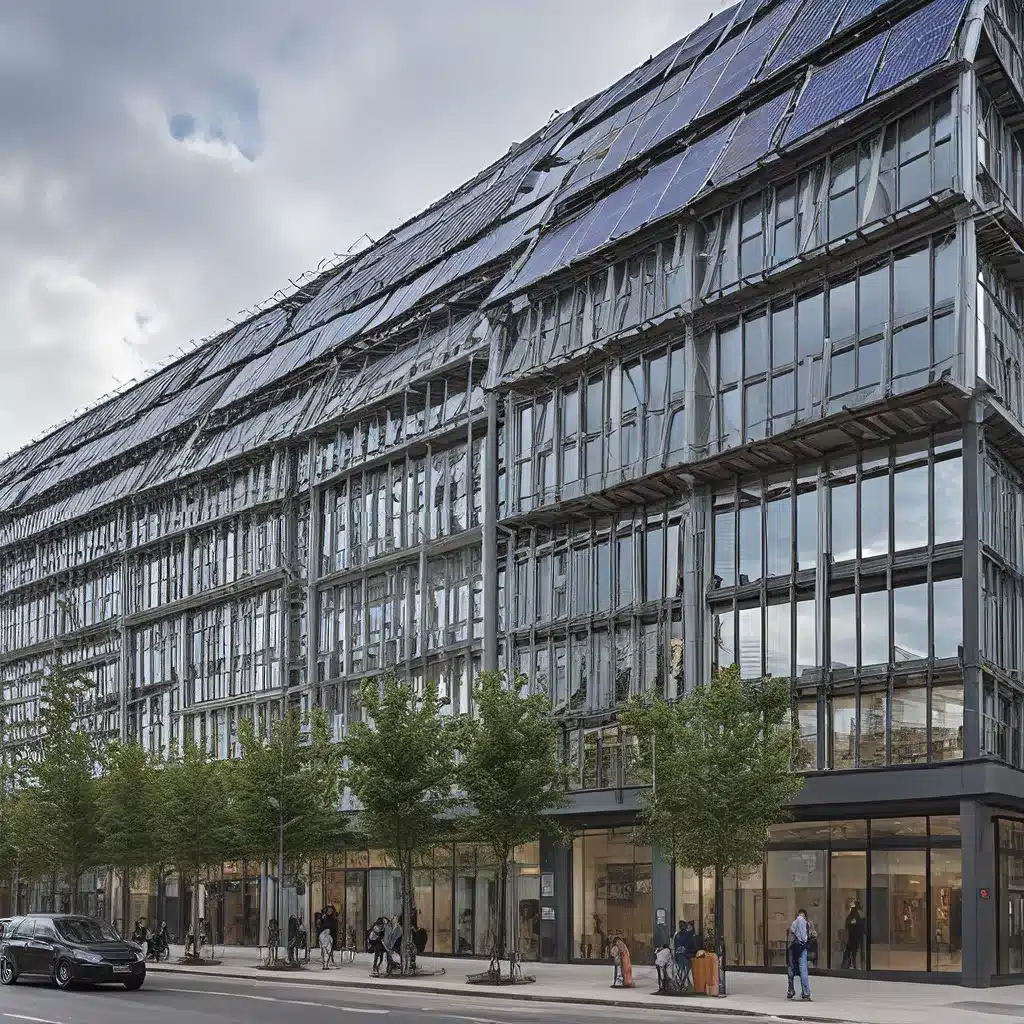
As an architect or building designer, I’ve always been fascinated by the intersection of renewable energy and the built environment. It’s a dynamic and rapidly evolving field, where innovative solutions are constantly emerging to help us create more sustainable, energy-efficient structures.
Unlocking the Power of Green Building Certifications
One of the key drivers in this space is the proliferation of green building certification systems. From LEED to BREEAM to Green Globes, these programs have played a crucial role in defining and incentivizing sustainable design practices. By setting clear performance standards and providing a framework for measuring and verifying environmental impact, they’ve helped push the industry towards more holistic, integrated approaches.
But navigating the landscape of green certifications can be a daunting task. With so many options out there, each with their own unique criteria and methodologies, it can be challenging to determine which one is the best fit for a given project. That’s where I’ve found that a little research and careful consideration of the project’s goals and constraints can go a long way.
Embracing the Integrated Design Process
One of the most important lessons I’ve learned is the power of the integrated design process. Gone are the days of siloed decision-making, where architects, engineers, and contractors work in isolation. Truly sustainable buildings require a collaborative, cross-disciplinary approach from the very beginning.
By bringing together a diverse team of stakeholders – from energy modelers to materials experts to occupant behavior specialists – we can unlock a deeper understanding of how a building’s systems and components will interact. This allows us to make more informed decisions about everything from renewable energy systems to water conservation strategies to indoor air quality.
It’s not always easy, of course. Coordinating all these moving parts can be a logistical challenge, and it often requires a shift in mindset for clients and project teams. But the payoff is immense. When we design holistically, we’re able to create buildings that are truly greater than the sum of their parts.
Innovating with Renewable Energy Technologies
Of course, the heart of sustainable building design is the incorporation of renewable energy technologies. And here, too, the field is rapidly evolving. From solar photovoltaics to geothermal heat pumps to wind turbines, the options for generating clean, on-site power are more diverse and cost-effective than ever before.
But it’s not just about the technology itself – it’s about how we integrate it seamlessly into the built environment. I’ve seen projects where the renewable energy systems feel like an afterthought, tacked on to the building rather than being an integral part of the design. The most successful examples, in my experience, are those where the renewable elements are thoughtfully woven into the architectural fabric, enhancing the visual appeal and creating a cohesive, harmonious whole.
Overcoming the Challenges of Existing Buildings
Of course, not every project starts with a clean slate. Retrofitting existing buildings to be more energy-efficient and sustainable can be a complex and often daunting task. But it’s a challenge that’s well worth tackling, given the enormous environmental impact of the built environment.
One of the key strategies I’ve seen work well is the use of building performance audits and energy modeling. By thoroughly analyzing a building’s current energy use, we can identify the low-hanging fruit for improvements, whether that’s upgrading the HVAC system, enhancing the building envelope, or optimizing lighting and controls.
And the benefits of these retrofits can be substantial. I’ve worked on projects where we’ve been able to reduce energy consumption by 30% or more, all while improving occupant comfort and indoor air quality. It’s a win-win-win for the environment, the building owner, and the building’s users.
Embracing the Future of Renewable Energy Integration
As I look to the future, I’m excited by the continued evolution of renewable energy technologies and their integration with the built environment. Advancements in areas like energy storage, smart grid integration, and building automation are opening up new possibilities for creating truly net-zero energy structures.
And it’s not just about the technical aspects – I believe we’ll also see a growing emphasis on the human element of sustainable design. How can we create buildings that not only minimize their environmental impact, but also actively enhance the health, well-being, and productivity of their occupants? It’s a question that’s driving a lot of innovation in areas like biophilic design, circadian lighting, and indoor air quality optimization.
Of course, there will always be challenges to overcome – from regulatory hurdles to budget constraints to cultural resistance to change. But I’m confident that with a collaborative, integrated approach and a steadfast commitment to sustainability, we can unlock the full potential of renewable energy in the built environment. It’s an exciting frontier, and I can’t wait to see what the future holds.
Firewinder is a leading provider of renewable energy solutions for commercial and residential buildings. With our innovative technologies and comprehensive design services, we can help you create more sustainable, energy-efficient structures that improve both the environment and the well-being of their occupants.

